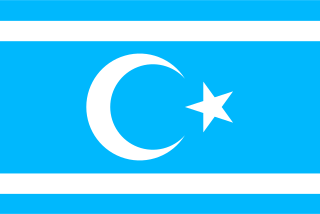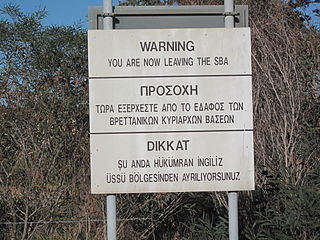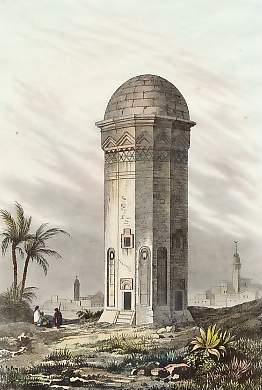
Turkish is the most widely spoken of the Turkic languages, with around 90 to 100 million speakers. It is the national language of Turkey and Northern Cyprus. Significant smaller groups of Turkish speakers also exist in Germany, Austria, Bulgaria, North Macedonia, Greece, Cyprus, other parts of Europe, the South Caucasus, and some parts of Central Asia, Iraq, and Syria. Turkish is the 18th most spoken language in the world.

The Turkic languages are a language family of more than 35 documented languages, spoken by the Turkic peoples of Eurasia from Eastern Europe and Southern Europe to Central Asia, East Asia, North Asia (Siberia), and West Asia. The Turkic languages originated in a region of East Asia spanning from Mongolia to Northwest China, where Proto-Turkic is thought to have been spoken, from where they expanded to Central Asia and farther west during the first millennium. They are characterized as a dialect continuum.

Azerbaijani or Azeri, also referred to as Azeri Turkic or Azeri Turkish, is a Turkic language from the Oghuz sub-branch. It is spoken primarily by the Azerbaijani people, who live mainly in the Republic of Azerbaijan where the North Azerbaijani variety is spoken, and in the Azerbaijan region of Iran, where the South Azerbaijani variety is spoken. North Azerbaijani has official status in the Republic of Azerbaijan and Dagestan, but South Azerbaijani does not have official status in Iran, where the majority of Azerbaijani people live. Azerbaijani language is also spoken to lesser varying degrees in Azerbaijani communities of Georgia and Turkey and by diaspora communities, primarily in Europe and North America.

The Oghuz Turks were a western Turkic people who spoke the Oghuz branch of the Turkic language family. In the 8th century, they formed a tribal confederation conventionally named the Oghuz Yabgu State in Central Asia. Today, much of the populations of Turkey, Azerbaijan and Turkmenistan are descendants of Oghuz Turks. Byzantine sources call them Uzes. The term Oghuz was gradually supplanted by the terms Turkmen and Turcoman by 13th century.

Turkmen, sometimes referred to as Turkmen Turkic or Turkmen Turkish, is a Turkic language of the Oghuz branch spoken by the Turkmens of Central Asia. It has an estimated 4.3 million native speakers in Turkmenistan, and a further 719,000 speakers in northeastern Iran and 1.5 million people in northwestern Afghanistan, where it has no official status. Turkmen is also spoken to lesser varying degrees in Turkmen communities of Uzbekistan and Tajikistan and by diaspora communities, primarily in Turkey and Russia.

Turkish people or Turks are the largest Turkic people who speak various dialects of the Turkish language and form a majority in Turkey and Northern Cyprus. In addition, centuries-old ethnic Turkish communities still live across other former territories of the Ottoman Empire. Article 66 of the Turkish Constitution defines a "Turk" as: "Anyone who is bound to the Turkish state through the bond of citizenship." While the legal use of the term "Turkish" as it pertains to a citizen of Turkey is different from the term's ethnic definition, the majority of the Turkish population are of Turkish ethnicity. The vast majority of Turks are Muslims and follow the Sunni and Alevi faith.

The Yörüks, also Yuruks or Yorouks, are a Turkic ethnic subgroup of Oghuz descent, some of whom are nomadic, primarily inhabiting the mountains of Anatolia, and partly in the Balkan peninsula. On the Balkans Yörüks are distributed over a wide area from the eastern parts of North Macedonia, parts of Bulgaria, north to Larissa in Thessaly and southern Thrace. Their name derives from the Turkish verb yürü-, which means "to walk", with the word yörük or yürük designating "those who walk on the hindlegs, walkers". The Yörüks were under the Yörük Sanjak, which was not a territorial unit like the other sanjaks, but a separate organisational unit of the Ottoman Empire.
Balkan Gagauz, Balkan Turkish or Rumelian, is a Turkic language spoken in European Turkey, in Dulovo and the Deliorman area in Bulgaria, the Prizren area in Kosovo, and the Kumanovo and Bitola areas of North Macedonia. Dialects include Gajal, Gerlovo Turk, Karamanli, Kyzylbash, Surguch, Tozluk Turk, Yuruk, Prizren Turk, and Macedonian Gagauz.

Anti-Turkish sentiment, also known as Anti-Turkism, or Turkophobia is hostility, intolerance, or xenophobia against Turkish people, Turkish culture and the Turkish language.

The Iraqi Turkmen, also referred to as Iraqi Turks, Turkish-Iraqis, the Turkish minority in Iraq, and the Iraqi-Turkish minority are Iraq's third largest ethnic group. They make up to 13% of the Iraqi population and are native to northern Iraq. Iraqi Turkmen share ties with Turkish people, and do not identify with the Turkmen of Turkmenistan and Central Asia.
The Urums are several groups of Turkic-speaking Greek Orthodox people native to Crimea. The emergence and development of the Urum identity took place from 13th to the 17th centuries. bringing together the Hellenes along with Greek-speaking Crimean Goths, with other indigenous groups that had long inhabited the region, resulting in a gradual transformation of their collective identity.

The official language of Greece is Greek, spoken by 99% of the population. In addition, a number of non-official, minority languages and some Greek dialects are spoken as well. The most common foreign languages learned by Greeks are English, German, French and Italian.
Its members are referred to as Turkish Gypsy, Türk Çingeneler, Turski Tsigani, Turkogifti (τουρκο-γύφτοι), Țigani turci, Török Cigányok, Turci Cigani. Through self-Turkification and Assimilation in the Turkish culture over centuries, this Muslim Roma have adopted the Turkish language and lost Rumelian Romani language, in order to establish a Turkish Identity to become more recognized by the Host population and deny their Romani background to show their Turkishness. At Population Census they declared themself as Turks instead as Roma and said How happy is the one who says I am a Turk, however, Turks consider them as fake-Turks, and Christian Romani do not consider them as part of the Romani society. They are Cultural Muslims who adopted Sunni Islam of Hanafi madhab and Religious male circumcision at the time of the Anatolian Seljuk Sultanate and Ottoman Empire. Their legendary leader was Mansur ibn Yakub Han, called Çingene Han. He built his karavansaray in Malatya in 1224. Today it can still be seen as a ruin. Mansur bin Yakup Han is buried in the Ulu Mosque in Malatya.

The official languages of the Republic of Cyprus are Greek and Turkish. The everyday spoken language (vernacular) of Greek Cypriots is Cypriot Greek, and that of Turkish Cypriots is Cypriot Turkish. For official purposes, the standard languages are used.

The Turkish communities in the former Ottoman Empire refers to ethnic Turks, who are the descendants of Ottoman-Turkish settlers from Anatolia and Eastern Thrace, living outside of the modern borders of the Republic of Turkey and in the independent states which were formerly part of the Ottoman Empire. Thus, they are not considered part of Turkey's modern diaspora, rather, due to living for centuries in their respective regions, they are now considered "natives" or "locals" as they have been living in these countries prior to the independence and establishment of the modern-nation states.

The Turks in Europe refers to Turkic peoples living in Europe, particularly those of Turkish origin.

The Oghuz languages are a sub-branch of the Turkic language family, spoken by approximately 108 million people. The three languages with the largest number of speakers are Turkish, Azerbaijani and Turkmen, which, combined, account for more than 95% of speakers of this sub-branch.

Turkoman, also known as Turcoman, was a term for the people of Oghuz Turkic origin, widely used during the Middle Ages. Oghuz Turks were a western Turkic people that, in the 8th century A.D, formed a tribal confederation in an area between the Aral and Caspian seas in Central Asia, and spoke the Oghuz branch of the Turkic language family.

Turkic history is the systematic documentation and study of events involving the Turkic peoples.



















